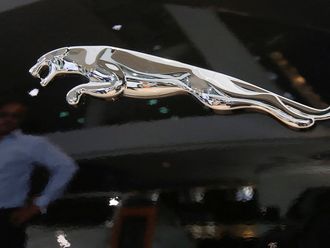Retail brands are trying to become more than just shops that we visit. Instead, they are becoming an ethos that we buy into, or a trusted friend that we can turn to for recommendations.
As the options available to consumers increase and there is more choice than ever before, retailers need to work harder to secure the loyalty and devotion of their customers. Otherwise, they face being forced into a race to the bottom on low prices, or worse, becoming totally irrelevant.
Those that still retain a physical shop presence also need to concern themselves with how they can compete with slick online-only retailers.
The recent news that Amazon has bought Souq.com in one of the Arab world’s biggest ever technology deals has shown that retailers are now competing for customers with some of the biggest technology companies in the world, all of whom have more experience of interacting with their users online and manipulating and learning from vast quantities of data to improve the service they offer.
However, as we spend more and more online, interacting with customers can become more complicated for retailers.
Particularly for those who still operate in both the online and offline space, there is a need to extend loyalty programmes to cover those who shop both online and offline. After all, many consumers are known to browse in store, but then buy online.
Or perhaps they use online search functions and use click and collect for ease, but then end up buying additional products in-store.
Shopping behaviours are changing, making it vital that loyalty programmes today integrate seamlessly between the online and offline worlds. We no longer perceive a difference between the online and offline worlds, we just recognise the brand that we’re trying to communicate with.
In particular, millennial consumers are craving interaction with brands that transcends the online and offline divide. We recently surveyed shoppers around the world, and found that among millennials, 36 per cent said that they wanted a more consistent customer service to be delivered across all channels. This seamless experience should also include the way that retailers are communicating with their shoppers.
In our survey, we found that 77 per cent of millennials said they would spend more with a retailer if they communicated with them better, for example by greeting them by name in-store. Of course, greeting someone by name online is relatively easy, but doing so when someone walks into your store is a more complicated proposition.
That said, it’s not just communication that should properly cross the online-offline divide. Rewards are so important to any loyalty programme to help build devoted and lasting relationships with customers. ICLP’s survey found that 77 per cent of shoppers feel that they don’t get anything in return for sharing their personal data, and 71 per cent also said that they didn’t feel that they were rewarded enough.
Blurring the online and offline worlds is vital for creating more intimacy with your shoppers. We recently partnered with Professor Rogge from the University of Rochester to analyse the relationships that shoppers have with brands.
Professor Rogge is one of the world’s leading academics in the field of relationships, and while he has previously investigated the relationships that we have with one another, we worked with him to see how the same models can be applied to how we feel about the retailers we shop with.
The best type of relationship, according to Sternberg’s model, is a devoted relationship, where there is intimacy, commitment and passion. By not plugging the gaps between the online and offline work, retailers are missing out on building intimacy with their customers, and a relationship without intimacy falls short of being truly devoted.
Retailers have a huge opportunity when it comes to the next generation of shoppers. While they expect much more from brands when it comes to blurring the online and offline worlds, they are ready to reward retailers who get this right.
Brands today have no excuse not to get this right, with the amount of data that they now hold on their customers. Shoppers shouldn’t have to think about whether they’re loyal to a brand’s stores or to a brand’s website. It should all be one and the same.
— The writer is General Manager of ICLP Dubai.












